Who Says Software-Defined Security Is What We Want?
Forbes | Dec 21, 2017
By Dr. Mike Lloyd, RedSeal CTO
Forbes | Dec 21, 2017
By Dr. Mike Lloyd, RedSeal CTO
Over the last few decades, many network security architecture products have come to market, all with useful features to help secure networks. If we assume that all of these security products are deployed in operational networks, why do we still see so many leaks and breaches?
Some say the users are not leveraging the full capabilities of these products – which is true.
Other say the users are not fully trained on how to use the product. Also true, and probably why they’re not using the full capabilities of their products.
Instead, we might benefit from remembering a basic truism: We humans are lazy.
Most of us, if offered a button that simply says “fix,” will convince ourselves that it will fix any network problem. We’ll buy that button every day of the week.
Our belief in fix buttons has led to a situation where many of us aren’t following standard security practices to secure our networks. When a network is designed or when you inherit a network, there are some basic things that should be done.
One of the first things to do is isolate, or segment, your network. Back in the 1990s, network segmentation was done more for performance reasons than security. As we moved from hubs to large, switched networks, our networks have become flat, with less segmentation. Today, once attackers get in, they can run rampant through a whole enterprise.
If we take the time to say, “Let’s step back a second,” and group our systems based on access needed we can avoid much trouble. For instance, a web server most likely will need access to the internet and should be on a separate network segment, while a workstation should be in another segment, printers in another, IoT in one of its own, and so on.
This segmentation allows better control and visibility. If it’s thought out well enough, network segmentation can even reduce the number of network monitoring security products you need to deploy. You can consolidate them at network choke points that control the flow of data between segments versus having to deploy them across an entire flat architecture. This also will help you recognize what network traffic should and should not be flowing to certain segments based on that network segment’s purpose.
This all seems to make sense, so why isn’t it done? In practice, network segmentation is usually implemented at the start. But, business happens, outages happen, administrators and network engineers are under enormous pressure to implement and fix things every day. All of this causes the network design to drift out of compliance. This drift can happen slowly or astonishingly fast. And, changes may not get documented. Personnel responsible for making the changes always intend to document things “tomorrow,” but tomorrow another event happens that takes priority over documentation.
Network segmentation only works if you can continuously ensure that it’s actually in place and working as intended. It is usually the security teams that have to verify it. But, as we all know, most security and networking teams do not always have the best partnerships. The network team is busy providing availability and rarely has the time to go back and ensure security is functioning.
Even if the security teams are checking segmentation in large enterprises, it is a herculean effort. As a result, validating network segmentation is done only yearly, at best. We can see how automating the inspection of the network security architecture is a clear benefit.
RedSeal enables an automated, comprehensive, continuous inspection of your network architecture. RedSeal understands and improves the resilience of every element, segment, and enclave of your network. RedSeal works with your existing security stack and network infrastructure (including cloud and SDN) to automatically and continuously visualize a logical model of your “as-built” network.
RedSeal’s network modeling and risk scoring platform enables enterprise networks to be resilient to cyber events and network interruptions in an increasingly digital and virtualized world, and to overcome one of the main enemies of cybersecurity – human nature.
Recently RedSeal hosted its annual Federal Customer Forum. One of the panels featured a discussion with several luminaries in the federal government cybersecurity ecosystem. The topic: the importance of the integration and automation of cybersecurity operations.
Those present were:
The following questions and answers were lightly edited for better comprehension:
Why is integration and automation important in defending against cyberattacks?
Not enough time to manage cybersecurity. The mundane tasks use up all the people and there is stuff to do afterwards. Humans need to focus on high level actions. Let the tools talk together and that will increase speed to resolution and limit damage. Attacks are automated by hackers, so defense needs to be automated, too.
Are security vendors doing enough to integrate with each other to support their customers’ needs? If so what have you seen work well? If not, what should we as an industry be doing better?
No. No one vendor does it all, and often have trouble integrating with others, so customers need to do a better job integrating solutions from different vendors or hire a managed security services provider.
When it comes to securing IoT devices, where does responsibility lie? Is it with the manufacturer, the user, or both?
Most say that there should be shared responsibility. Devices should be patchable and upgradable. “Know your network” is hard with IoT. There are many, many more endpoints to worry about. Organizations need to develop safe processes for adding IoT to the networks, and segment them onto less secure networks. Organizations need to develop a patching strategy generally, but specifically for IoT devices.
There was a recent example where drones were purchased by the DOD. It turns out that the chips had been white-label manufactured by Huawei in China. These drones were exfiltrating data without user’s knowledge to parties unknown. This kind of supply chain issue is going to be a bigger problem going forward.
If you were to go into an organization that is standing up a new, from scratch, security stack, what capabilities would you recommend they choose?
Detection is important, but how do you trust the decisions that the software makes? You need to get to the raw, unfiltered data. Also, the key is to set up network segments to prevent intruders from roaming freely across your infrastructure. Third, you need to set up hunt teams to proactively search for those intruders. Fourth, setting up a continuous config management process that inventories unpatched software is mandatory now. Penetration testing is useful, but penetration testers usually quit after they find a way in. What about the other thousands of vulnerabilities that they didn’t find?
Good cybersecurity teams are always looking to tear down silos. Bad ones stick to themselves. Hackers are known for sharing code, tools and vulnerabilities, so it seems obvious that cybersecurity teams should do the same. NOCs and SOCs are starting to talk more, which is a good thing, however cloud and dev ops teams seem to be still off on their own. Executive priorities still drive decision making, and no one can prevent those decisions from creating security issues. Cyber teams need to be stewards of data. Implement CIS 20 and set up a risk management framework. Use table top exercises to train and improve execution, rather than focus on checkboxes and processes.
It appears that you cannot truly protect yourself if you are not using integrated products. Does it make sense to keep buying solutions piecemeal or should security teams look for packages that already integrate?
Most systems integrators do a good job integrating various cybersecurity tools in government. The private sector is much less advanced in this area. Most commercial companies get technologies then push them to a managed services provider.
Do you see threat intelligence playing a big role with federal customers in protecting their networks?
It’s notable that the same old threats pop up all the time. What is unknown is the scary part of the day. For threat detection, we need a faster and faster process of identification, integration and remediation. Hackers share data. We need a better understanding of where the whole threat environment is coming from. That said, we need to protect high value assets (HVA) first. That means mapping out access from HVAs. The average detection time nowadays is 170 days, so you had better set up your organization for maximum resilience. Attacks are now coming from POS systems and, famously, a fish tank in a Las Vegas hotel.
Techaeris | Dec 14, 2017
The world of information security was certainly a whirlwind of activity in 2017. It seemed no one was immune to some sort of security breach or incident and it only got worse through the year. Some of the affected companies involved in incidents are still paying the price for those breaches.
With 2018 coming, the landscape for information security is wide open. We’re lucky enough to have a group of information security experts who are making some predictions for the industry in 2018.
Silicon Valley Business Journal | Dec 14, 2017
After years as a successful venture capitalist in Silicon Valley, Ray Rothrock is spearheading the digital resilience movement as the chairman and CEO of cybersecurity firm RedSeal. An outspoken technological evangelist, Rothrock continues to be driven by his personal values, creativity and a desire to do good while also turning a profit.
SUNNYVALE, Calif. – December 12, 2017 – RedSeal announced today that its market leading network modeling and risk scoring platform has been certified by CIS to compare the configuration status of network devices against the consensus-based best practice standards contained in the Cisco IOS 15 CIS Benchmark. Organizations that leverage RedSeal can now ensure that the configurations of their critical assets align with the associated CIS Benchmarks consensus-based practice standards.
“RedSeal customers using Cisco network devices can combat the evolving cybersecurity challenges they face by following CIS’s proven guidelines,” said Kurt Van Etten, vice president of product management at RedSeal. “Adhering to standards, industry best practices and organizational policies is critical as organizations strive to become digitally resilient. RedSeal customers can now compare the configurations of their Cisco network devices with the CIS Benchmarks and verify compliance.”
RedSeal’s network modeling and risk scoring platform builds an accurate, up-to-date model of an organization’s entire, as-built network to visualize access paths, prioritize what to fix, and target existing cybersecurity resources to protect their most valuable assets. With RedSeal’s Digital Resilience Score, decision makers can see the security status and benchmark progress toward digital resilience.
“Cybersecurity challenges are mounting daily, which makes the need for standard configurations imperative. By certifying its product with CIS, RedSeal has demonstrated its commitment to actively solve the foundational problem of ensuring standard configurations are used throughout a given enterprise,” said Curtis Dukes, Executive V.P. & G.M., CIS Security Best Practices & Automation.
In order for a product to receive the CIS Benchmark Certification, a CIS SecureSuite Product Vendor member must adapt its product to accurately check/score/report as compared to the security recommendations in the associated CIS Benchmarks profile. CIS Benchmark Certified Products demonstrate a strong commitment by the vendors to provide their customers with the ability to ensure their assets are secured according to consensus-based best practice standards.
The CIS Benchmarks program is recognized as a trusted, independent authority that facilitates the collaboration of public and private industry experts to achieve consensus on practical and actionable solutions. CIS Benchmarks are recommended as industry-accepted system hardening standards and are used by organizations in meeting compliance requirements for Federal Information Security Management Act, PCI, Health Insurance Portability Accountability Act and other security requirements.
About the CIS
CIS is a forward-thinking nonprofit entity that harnesses the power of a global IT community to safeguard private and public organizations against cyber threats. Our CIS Controls and CIS Benchmarks are the global standard and recognized best practices for securing IT systems and data against the most pervasive attacks. These proven guidelines are continually refined and verified by a volunteer global community of experienced IT professionals. CIS is home to the Multi-State Information Sharing & Analysis Center (MS-ISAC®), the go-to resource for cyber threat prevention, protection, response, and recovery for state, local, tribal, and territorial government entities.
About RedSeal
RedSeal’s network modeling and risk scoring platform is the foundation for enabling enterprise networks to be resilient to cyber events and network interruptions in an increasingly digital world. RedSeal helps customers understand their network from the inside, out – and provides rich context, situational awareness and a Digital Resilience Score to help enterprises measure and ultimately build greater resilience into their infrastructure. Government agencies and Global 2000 companies around the world rely on RedSeal to help them improve their overall security posture, accelerate incident response and increase the productivity of their security and network teams. Founded in 2004, RedSeal is headquartered in Sunnyvale, California and serves customers globally through a direct and channel partner network. Follow RedSeal on Twitter at @redseal_co and on LinkedIn.
Contact:
Dean Fisk, Finn Partners
+1 (707) 292-4201
dean.fisk@finnpartners.com
SIGNAL Magazine | Dec 1, 2017
By J. Wayne Lloyd, RedSeal Federal CTO
By 2025, an estimated 75 billion or more devices will be connected via the Internet. While the ability to access data on any device from any device multiplies productivity exponentially, it also creates unforeseeable vulnerabilities that organizations are only beginning to understand.
Last year’s Mirai botnet distributed denial-of-service attack, which infected millions of devices, demonstrates the multifaceted challenges federal agencies and private-sector companies face when securing their devices and networks. These challenges will only continue to grow both inside and outside of these domains.
Middle Market Executive | November 30, 2017
The year 2017 has been a memorable growth chapter for Sunnyvale, California’s RedSeal. Having fine-tuned its customer offerings, the cybersecurity middleweight is now seeking to sound the cyber alarm and wake up corporate America to a threat now mushrooming at every digital connection. RedSeal CEO Ray Rothrock explains the threat, challenge, and opportunity fueling RedSeal’s impressive growth.
Watch Video: RedSeal and Hidden Cobra Overview, Use Cases and Demo
Introduction
On November 17th, the United States Computer Emergency Ready Team (US-CERT), in conjunction with the FBI, released a pair of advisories about the North Korean hacking and espionage campaign code named HIDDEN COBRA. The latest advisories describe two pieces of malware called Volgmer and FALLCHILL, which have been actively used to attack enterprises and other commercial entities in the US. Since 2013, organizations in the aerospace, telecommunications, and finance industries have been targeted with spear phishing campaigns.
The US-CERT advisories provide both a detailed analysis of how the underlying malware packages function as well as the detection signatures and the observed IP addresses of the command and control (C2) infrastructure. This data can be used to detect the malware on your network and sever access to its controllers (Volgmer C2 IP Addresses: CSV STIX; FALL CHILL C2 IP addresses: CSV STIX). US-CERT’s previous HIDDEN COBRA advisories from June also reveal several vulnerabilities (CVEs) that North Korean threat actors are known to target and exploit.
This article will describe how the Volgmer and FALLCHILL malware operate, what they target, how they infect those targets, the potential impacts of these infections, and effective mitigation and remediation strategies to protect your enterprise.
Summary of Suggested Actions:
About the Volgmer and FALLCHILL Malware
Both malware packages are Windows binaries consisting of executable files and DLL counterparts able to be run as a Windows service. The primary method of attack has been through targeted spear phishing campaigns that trick victims into opening malicious attachments or clicking links leading to malicious websites exploiting browser-based vulnerabilities.
Volgmer
The Volgmer package contains four distinct modules, a “dropper”, two remote administration tools (RATs), and a botnet controller.
FALLCHILL
The FALLCHILL malware is a remote administration tool demonstrating a heightened degree of sophistication in its ability to remain hidden, as well as an advanced communication mechanism with its C2 infrastructure. FALLCHILL masquerades as a legitimate Windows service randomizing across seemingly innocuous service names. It generates fake TLS traffic over port 443, hiding the C2 commands and communications in the TLS packet headers, which then get routed through a network of proxy servers.

How the Malware Spreads and Impact of Infection
Although both malware packages are primarily distributed via targeted spear phishing campaigns, they have also been observed on malicious websites. This increases the chances for opportunistic drive-by-download infections. These targeted attacks have been seen in the US aerospace, telecommunications, and financial services.
A successful infection will result in the HIDDEN COBRA threat actors having persistent access to and control over compromised computers. The remote administration tools allow them to modify the local file system, upload files, execute files or any arbitrary code, as well as download anything on the file system. The result is that attackers will have a hidden backdoor to your system and can execute any arbitrary code. Thus, in addition to being able to exfiltrate local files such as documents directories or Outlook databases, the infection establishes a beachhead into the rest of the network from which future breaches can be staged.
General Mitigation Advice
Enterprise security organizations can take several steps to mitigate the risk of a successful spear phishing or drive-by-download infection. In the past few years, attackers have, with increasing frequency targeted end user workstations to exfiltrate local data and establish a beachhead into the rest of the corporate network. As a result, it is increasingly important to expand vulnerability management programs to include regular scans of workstations and laptops followed by timely patching of any discovered vulnerabilities. Employees, particularly executives and those exposed to sensitive or proprietary data, should be trained on practicing good email hygiene and being vigilant for possible phishing attacks. User workstations should be configured according to the principle of least privilege, avoiding local administrator level access where possible. Additionally, the US-CERT also advises limiting the applications allowed to execute on a host to an approved whitelist, to prevent malware masquerading as legitimate software.
RedSeal Can Increase Resilience and Decrease Risk
RedSeal users can decrease their risk of exposure by identifying, closing, and monitoring access from their networks to the HIDDEN COBRA C2 infrastructure. Moreover, in the event of a detected IOC, RedSeal allows you to accelerate incident investigation and containment to mitigate the impact of an infection.
1. Identify and close any existing outbound access to the C2 infrastructure
The first step is to make sure you eliminate or minimize outbound access from your networks to the HIDDEN COBRA C2 infrastructure. Since the C2 IP addresses point at proxies across the world that relay commands and data to and from the threat actors, many are associated with legitimate entities whose servers have been exploited, or commercial hosting providers whose servers have been rented. To locate access from the inside of your network to any given C2 address from the advisory, use RedSeal’s security intelligence center to perform an access query from an internal region to the internet, and in the IPs filter box, enter the IP address from the US-CERT data.
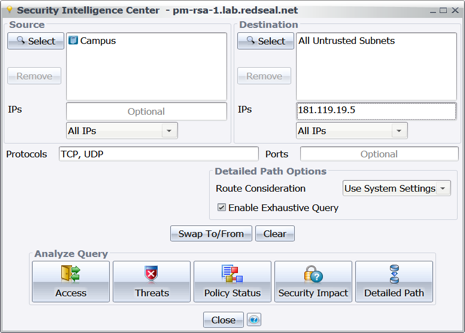
Figure 2: Running an Access Query from the Security Intelligence Center from internal to C2 Infrastructure
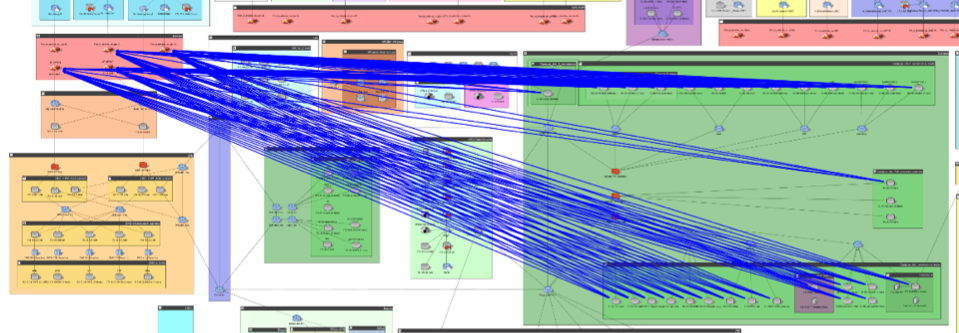
Figure 3: Access query results shown on map, showing existing access from internal assets to external THREAT COBRA infrastructure
With the results of the access query, the next step is to create additional controls such as firewall or routing rules to block access to the relevant IP address at your perimeter. To decide where to introduce such controls, you can run a RedSeal detailed path query to generate a visual traceroute of the offending access path(s) and identify which devices are along those paths and can be used to close access.
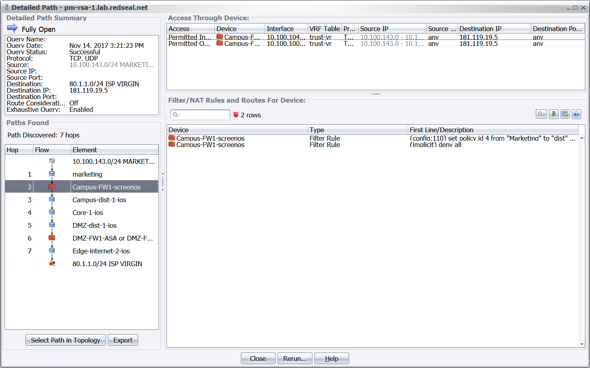
Figure 4: Detailed Path result identifying all network devices and relevant config locations mediating access from an internal asset to the HIDDEN COBRA infrastructure
2. Verify vulnerability scan coverage and perform a risk-based prioritization of vulnerabilities
The HIDDEN COBRA campaign has been known to use a set of five CVEs (CVE-2015-6585; CVE-2015-8651; CVE-2016-0034; CVE-2016-1019; CVE-2016-4117) as the vector for infection. These CVEs include several browser-based vulnerabilities for the Adobe Flash and Microsoft Silverlight plugins as well as a Korean word processing application. It is important to note that while these are the vulnerabilities known to be targeted in the wild to deliver Volgmer or FALLCHILL, any known or unknown Windows-based vulnerability that allows arbitrary code execution and/or privilege escalation can be used as part of a future spear phishing campaign. While it is crucial to locate and remediate the above CVEs first, it is important to perform a vulnerability scan of user workstations for all such vulnerabilities, not just the five enumerated ones.
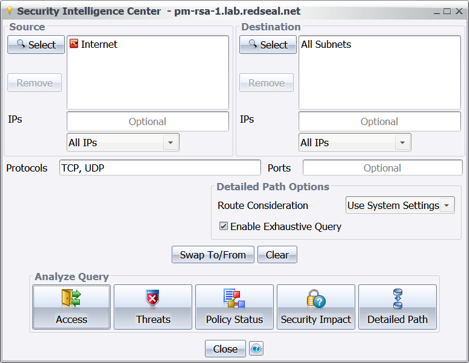
Figure 5: Using the Security Intelligence Center to execute a Threat Query to reveal which vulnerable assets are directly exploitable from the Internet
After importing the results of a vulnerability scan, vulnerability managers can first verify whether the scanner’s coverage was complete and identify any areas on the network missed by the scanner. This is accomplished by looking for all “Unscanned Subnets” model issues (MI-7) within your RedSeal model. A subsequent detailed path query from the scanner to the unscanned subnet will reveal whether and why access is blocked.
Next, you can perform a risk-based prioritization of the vulnerable hosts to ensure that the highest risk vulnerabilities are remediated first. The CVEs known to be actively exploited by the HIDDEN COBRA threat actors should be patched or otherwise mitigated first. A good start is to target the vulnerabilities that are on hosts that are accessible from untrusted networks, such as the Internet or a vendor’s network.
Since the malware attempts to establish a hidden Windows service with RAT capabilities, the next vulnerabilities to target for remediation are those that are directly or indirectly accessible and exploitable from any potentially compromised host. To find them, a RedSeal threat query can reveal all vulnerable hosts exploitable from a compromised endpoint on your network.
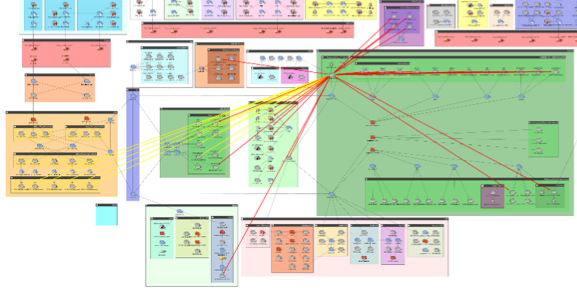
Figure 6: Visual results showing direct (red) and indirect (yellow) threats to the rest of the enterprise from a compromised host.
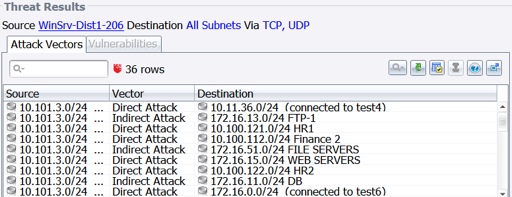
Figure 7: Threat Query results identifying vulnerable hosts threatened by the compromised endpoint
3. Investigate and contain existing IOCs
Finally, you can achieve greater resilience by accelerating your response to detected indicators of compromise and contain compromised systems while working to eliminate the infection. UC-CERT released several detection signatures to identify potentially compromised systems. By leveraging RedSeal’s incident response query directly or from our integrations with major SIEMs like QRadar, ArcSight, and Splunk, you can quickly assess the potential impact of a compromise and identify the mitigating controls necessary to isolate and contain it. The query allows incident responders to rapidly discover and prioritize by value all assets that are accessible from the vulnerable endpoint. A subsequent detailed path query between the vulnerable endpoint and a downstream critical asset will reveal all network devices mediating access and where controls such as firewall rules can be deployed to reduce downstream risk.
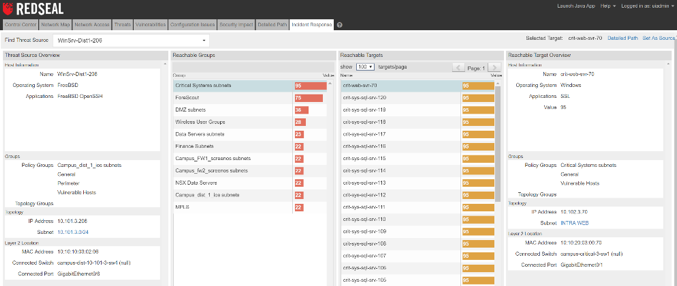
Figure 8: Incident Response query showing accessible groups and assets from the source of an indicator of compromise
Summary
The HIDDEN COBRA campaign is sophisticated, recently showing increases in intensity and variety of methods used. Defenders need to be resilient to minimize enterprise risk, efficiently mitigate damage, and recover from a successful compromise. RedSeal can help you achieve resilience in the face of these changing threats — by assessing ways to block outbound access to C2 nodes, by locating vulnerable and high risk internal machines, and by speeding the investigation of any detected indicators of compromise.
____________________
The Uber hack is a public lesson that a breach may be bad, but a cover-up is worse. (See Nixon, Richard.) It was a foolish mistake to try to hide an attack of this scale, but then, the history of security is a process where we all slowly learn from foolish mistakes. We live in an evolutionary arms race – our defenses are forced to improve, so the attackers mutate their methods and move on. Academically, we know what it takes to achieve ideal security, but in the real world, it’s too expensive and invasive to be practical. (See quantum cryptography for one example.) Companies rushing to grow and make profits (like Uber) aggressively try to cut corners, but end up finding out the hard way which corners cannot safely be cut.
It’s likely that the stolen data was, in fact, deleted. Why? On the one hand, we would likely have seen bad actors using or selling the data if it were still available. That is, from the attacker’s point of view, data like this is more like milk than cheese – it doesn’t age well. Many breaches are only detected when we see bad guys using what they have stolen, but nobody has reported a series of thefts or impersonations that track back to victims whose connection is that they used Uber.
But we can also see that the data was likely deleted when we think about the motives of the attackers. Our adversaries are thoughtful people, looking for maximum payout for minimum risk. They really don’t care about our names, or trip histories, or even credit card numbers – they just want to turn data into money, using the best risk-reward tradeoff they can find. They had three choices: use the data, delete it, or both (by taking Uber’s hush money, but releasing the data anyway). The problem with “both” is thieves are worried about reputation – indeed, they care more about that than most. (“To live outside the law, you must be honest” – Bob Dylan.) Once you’ve found a blackmail victim, the one thing you don’t do is give up your power over them – if the attackers took the money but then released the data anyway, they could be sure Uber would not pay them again if they broke in again. The cost/benefit analysis is clear – taking a known pot of money for a cover-up is safer and more repeatable than the uncertain rewards of using the stolen data directly.